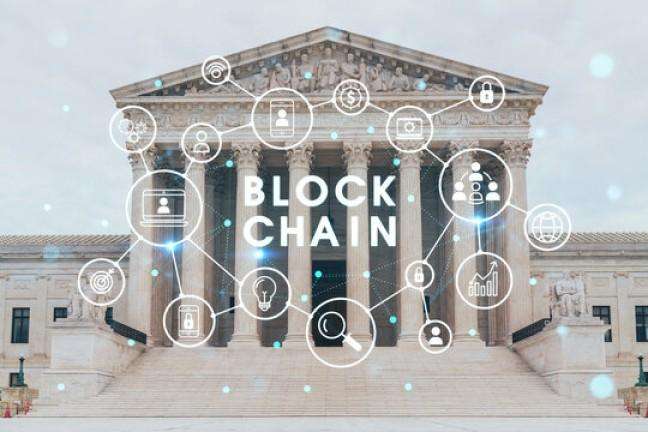Introduction
Blockchain technology has evolved significantly since the inception of Bitcoin in 2009. Layer 1 blockchains form the foundation of this ecosystem. They are the base protocols that process and validate transactions without relying on any additional layers. These blockchains define the rules of the network, secure transactions, and maintain decentralization.
Understanding Layer 1 blockchains is essential for anyone interested in blockchain technology, cryptocurrency investments, or decentralized applications. In this article, I will break down the different Layer 1 blockchains, their architecture, consensus mechanisms, scalability solutions, and use cases. I will also compare their strengths and weaknesses, helping you make informed decisions about their potential.
Table of Contents
What Are Layer 1 Blockchains?
Layer 1 blockchains refer to the foundational blockchain networks that process transactions and execute smart contracts directly. These blockchains do not rely on external scaling solutions, like Layer 2 rollups, for transaction validation.
Characteristics of Layer 1 Blockchains
- Decentralization: They distribute control across a network of nodes.
- Security: They use cryptographic algorithms to prevent attacks.
- Scalability: Some use sharding or new consensus mechanisms to improve throughput.
- Native Token: They have a built-in cryptocurrency for transactions and incentives.
Major Layer 1 Blockchains
1. Bitcoin (BTC)
Bitcoin is the first and most recognized Layer 1 blockchain. It was designed to serve as a decentralized currency and store of value.
- Consensus Mechanism: Proof-of-Work (PoW)
- Block Time: ~10 minutes
- Transaction Speed: 7 transactions per second (TPS)
- Security: High due to extensive mining power
- Scalability Solutions: SegWit, Lightning Network (Layer 2)
- Use Case: Digital gold, cross-border payments
2. Ethereum (ETH)
Ethereum introduced smart contracts, enabling decentralized applications (dApps) to run on its blockchain.
- Consensus Mechanism: Proof-of-Stake (PoS) (formerly Proof-of-Work)
- Block Time: ~12 seconds
- Transaction Speed: 30 TPS
- Security: High, but more prone to smart contract vulnerabilities
- Scalability Solutions: Rollups, Sharding (upcoming)
- Use Case: Smart contracts, DeFi, NFTs
3. Binance Smart Chain (BSC)
BSC is a Layer 1 blockchain developed by Binance, offering fast transactions with lower fees.
- Consensus Mechanism: Proof-of-Staked-Authority (PoSA)
- Block Time: ~3 seconds
- Transaction Speed: ~160 TPS
- Security: Lower decentralization compared to Ethereum
- Scalability Solutions: None (relies on high throughput design)
- Use Case: DeFi, gaming, token issuance
4. Solana (SOL)
Solana is designed for high-speed and low-cost transactions, making it ideal for large-scale applications.
- Consensus Mechanism: Proof-of-History (PoH) + PoS
- Block Time: ~400 milliseconds
- Transaction Speed: ~65,000 TPS (theoretical)
- Security: Moderate; suffered multiple outages
- Scalability Solutions: Built-in high throughput
- Use Case: DeFi, gaming, NFTs
5. Cardano (ADA)
Cardano focuses on security and scalability, using rigorous academic research to develop its network.
- Consensus Mechanism: Ouroboros PoS
- Block Time: ~20 seconds
- Transaction Speed: ~250 TPS
- Security: High due to formal verification methods
- Scalability Solutions: Hydra (future upgrade)
- Use Case: Smart contracts, DeFi, identity solutions
6. Polkadot (DOT)
Polkadot enables interoperability between multiple blockchains through its relay chain.
- Consensus Mechanism: Nominated PoS
- Block Time: ~6 seconds
- Transaction Speed: ~1,000 TPS
- Security: Shared security model
- Scalability Solutions: Parachains
- Use Case: Cross-chain communication, DeFi, governance
Comparing Layer 1 Blockchains
| Blockchain | Consensus Mechanism | Block Time | TPS | Security | Scalability |
|---|---|---|---|---|---|
| Bitcoin | PoW | 10 min | 7 | High | Lightning Network (Layer 2) |
| Ethereum | PoS | 12 sec | 30 | Moderate | Rollups, Sharding |
| Binance Smart Chain | PoSA | 3 sec | 160 | Lower decentralization | None |
| Solana | PoH + PoS | 400 ms | 65,000 | Moderate | High throughput design |
| Cardano | Ouroboros PoS | 20 sec | 250 | High | Hydra (future) |
| Polkadot | NPoS | 6 sec | 1,000 | Shared security | Parachains |
Scalability Considerations
Scalability remains a major challenge for Layer 1 blockchains. Solutions like sharding, PoS, and new data structures attempt to increase throughput. Let’s consider a scenario where scalability matters:
Imagine a blockchain supporting 100 TPS, while demand peaks at 10,000 TPS. Transactions queue up, and fees increase due to congestion. A scalable blockchain with sharding might handle 5,000 TPS, reducing delays and costs.
Security Concerns
Security depends on decentralization, cryptographic strength, and governance. Bitcoin remains the most secure due to its extensive mining network. However, newer chains like Solana, while fast, have faced downtime issues.
The Future of Layer 1 Blockchains
Layer 1 blockchains continue to evolve, integrating new consensus mechanisms and scalability solutions. Future trends include:
- Interoperability: More chains will interact seamlessly.
- Improved Consensus: Hybrid models will enhance security and efficiency.
- Decentralized Governance: Networks will shift towards community-led upgrades.
Conclusion
Layer 1 blockchains form the backbone of decentralized technology. Each has strengths and trade-offs, making them suitable for different use cases. Understanding their mechanisms, scalability, and security is essential for making informed investment or development decisions.





